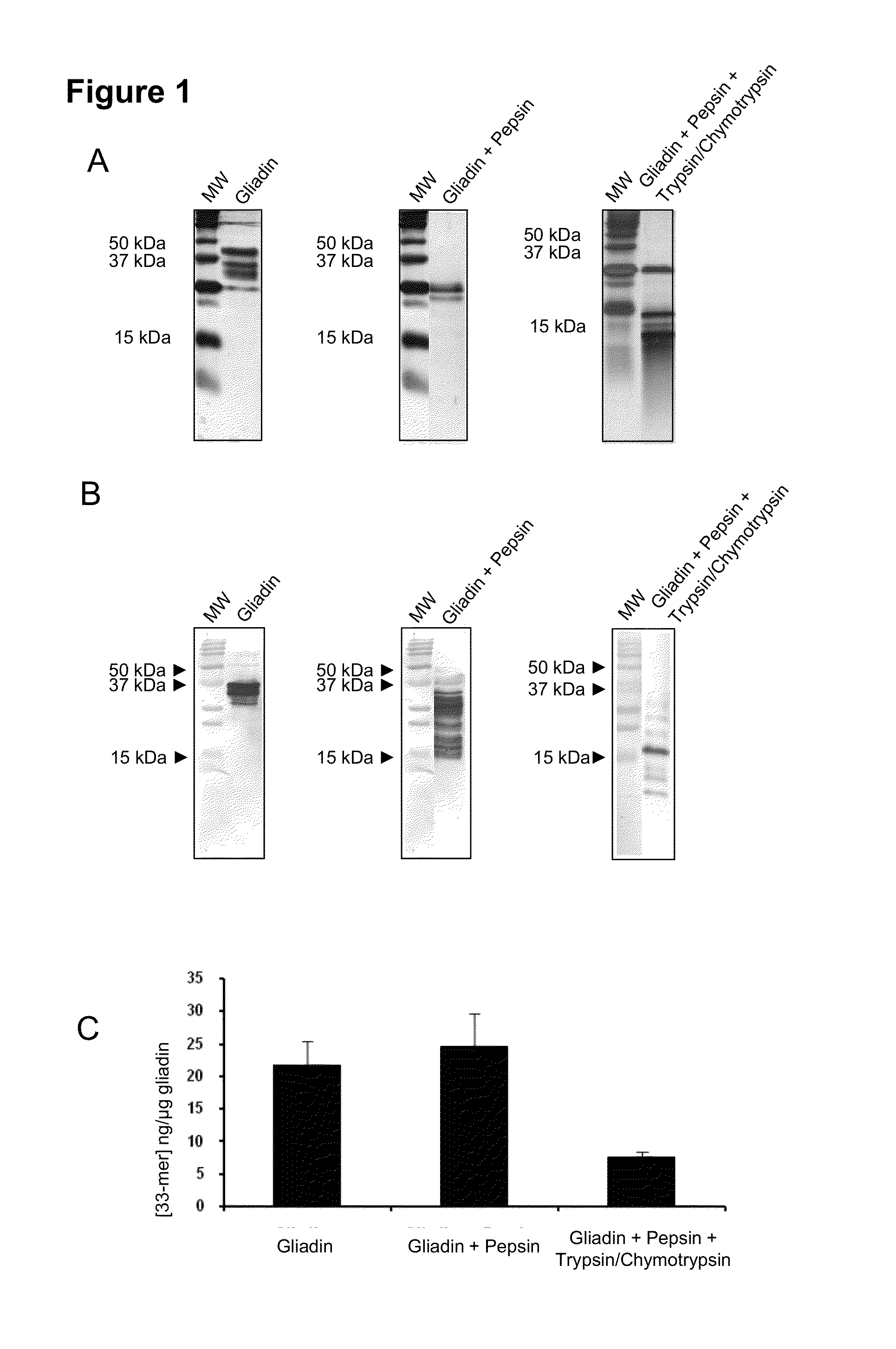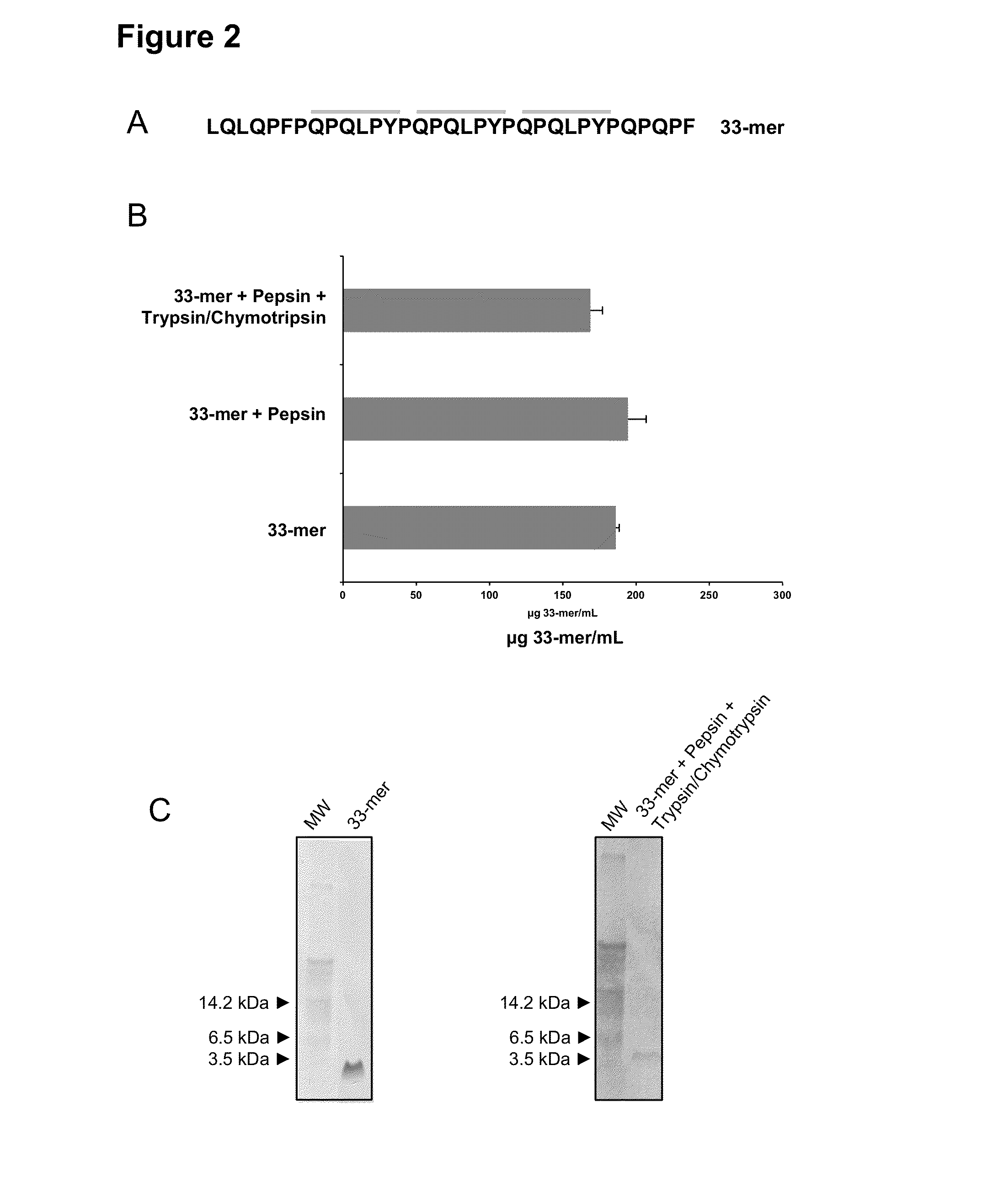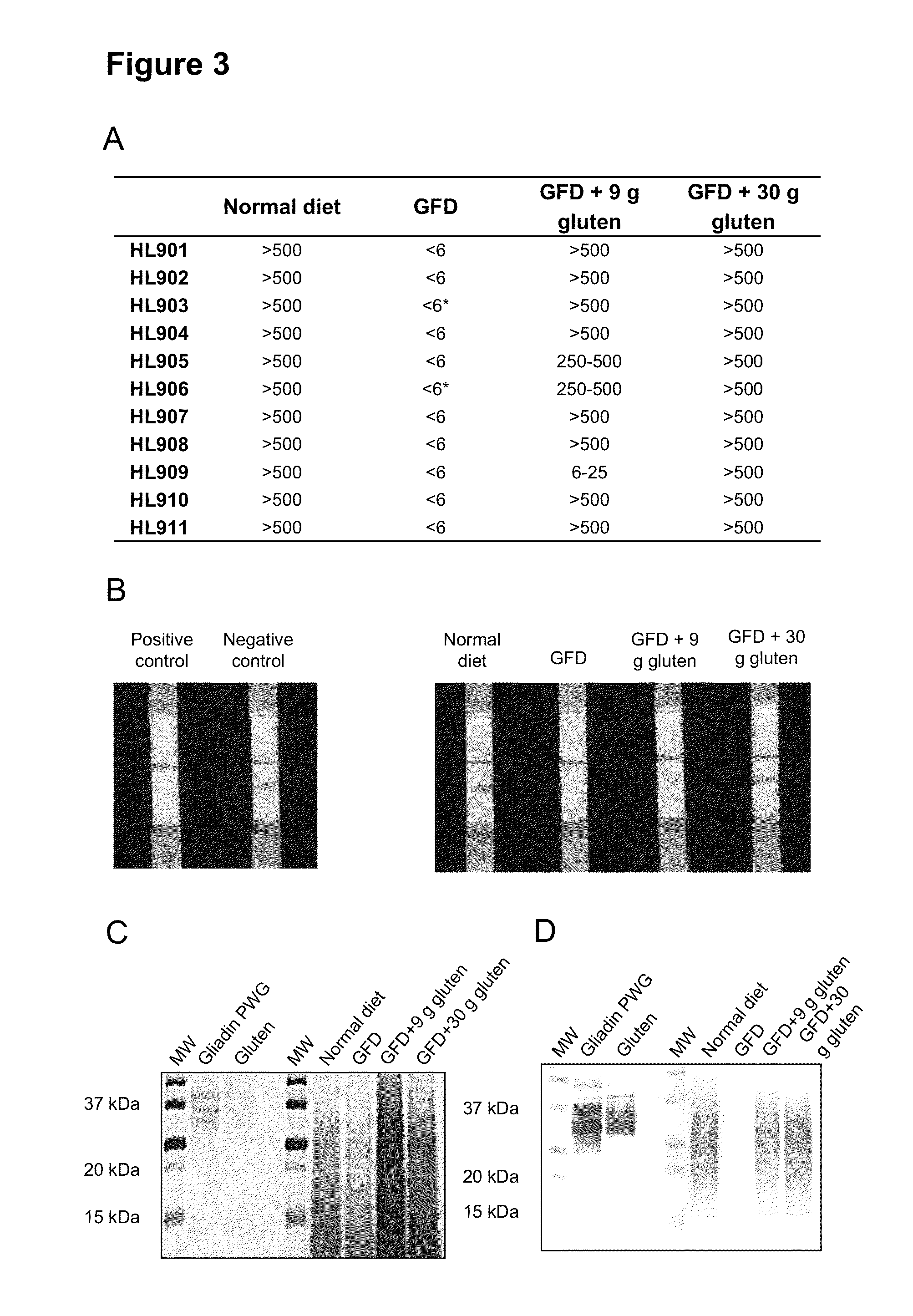Determination of levels of immunogenic gluten peptides in human samples
a technology of immunogenic gluten and human samples, applied in the field of medical clinics, can solve the problems of reducing intestinal absorption and affecting the adherence to strictness
- Summary
- Abstract
- Description
- Claims
- Application Information
AI Technical Summary
Benefits of technology
Problems solved by technology
Method used
Image
Examples
example 1
Quantification of Toxic Peptides from Gliadin PWG Obtained after Simulated Gastrointestinal Digestion
[0031]The present example shows that a substantial portion of the immunogenic peptides of gluten remain susceptible for fecal detection despite gastrointestinal digestion. Among the major proteins of the diet, those that constitute gluten are the only ones that contain approximately 15% of proline residues and 35% of glutamine residues. The high content of these two amino acids prevents the complete proteolysis of these proteins by gastric and pancreatic enzymes, so that peptide fragments are formed in the small intestine which are immunotoxic for celiac patients. In particular, the 33-mer peptide was found as one of the main contributors to the immunotoxicity of gluten (Shan et al., 2002, Science, 297:2275-2279). This peptide of the α-2 gliadin contains six recognition epitopes for T cells and is highly resistant to proteolysis.
[0032]The moAb G12 is specific for the epitope of six a...
example 2
Detection and Semiquantification of Gluten Proteins / Peptides in Feces of Healthy Individuals Undergoing Gluten Controlled Diet
[0046]The present example shows how the digestion that gluten proteins suffer in vivo in healthy individuals occurs, and also to determine the ability of moAb G12 to detect these proteins / peptides excreted through the feces. An assay was carried out in which the type and quantity of gluten consumed in healthy individuals was controlled (n=11, 7 men and 4 women, mean age 24-42 years). The inclusion criteria were the absence of diseases, gastrointestinal symptoms, medications, antibiotics in the last two months and no family history of CD. All participants were assessed for CD, showed normal serum tTG levels and HLA-DQ phenotype was not DQ-2 / -8. Hemoglobin levels and blood biochemical analysis, including kidney and liver tests were within normal values. The local ethic committee from “Hospital Universitario de Leon” approved this study and informed consent was ...
example 3
In Vivo Monitoring of Gluten Immunotoxic Peptides in Feces from Individuals Following a Controlled Diet with Gluten
[0058]This example shows how the partial digestion of reactive peptides can be determined by ELISA with the G12 anti gliadin 33 mer antibody, as convenient method, due to its simplicity, sensitivity and economy. In the case of the detection of proteins / peptides from gluten, sandwich ELISA systems are designed to quantify intact proteins but may underestimate hydrolyzed gluten. Gluten passage through the gastrointestinal tract results in the hydrolysis of the majority of it: a competitive ELISA is able to quantify toxic peptides, even at the level of a few amino acids, so it would be a convenient method for quantification.
[0059]Therefore, the aim of this study was to determine the concentration of toxic peptides present in the feces from healthy individuals by G12 competitive ELISA using as standard curve 33-mer peptide. Each experiment was carried out in triplicate on s...
PUM
 Login to View More
Login to View More Abstract
Description
Claims
Application Information
 Login to View More
Login to View More - R&D
- Intellectual Property
- Life Sciences
- Materials
- Tech Scout
- Unparalleled Data Quality
- Higher Quality Content
- 60% Fewer Hallucinations
Browse by: Latest US Patents, China's latest patents, Technical Efficacy Thesaurus, Application Domain, Technology Topic, Popular Technical Reports.
© 2025 PatSnap. All rights reserved.Legal|Privacy policy|Modern Slavery Act Transparency Statement|Sitemap|About US| Contact US: help@patsnap.com



